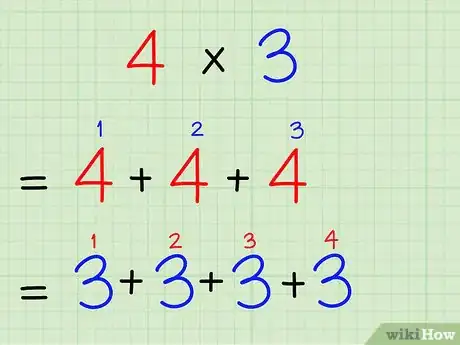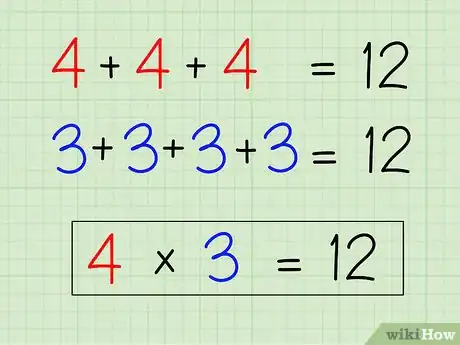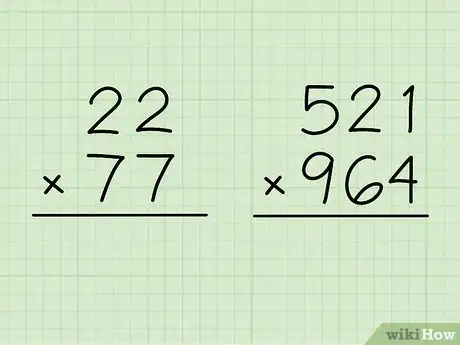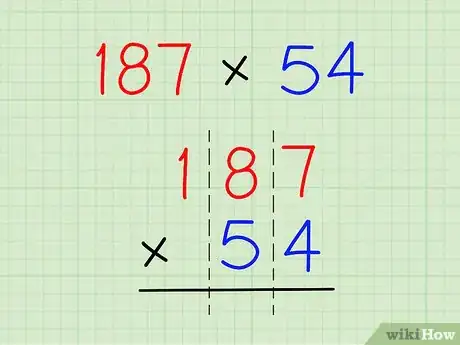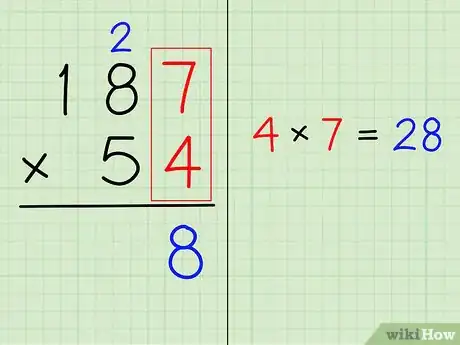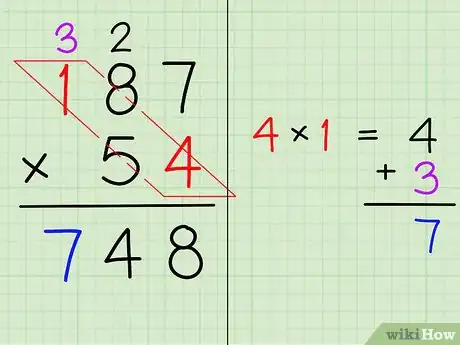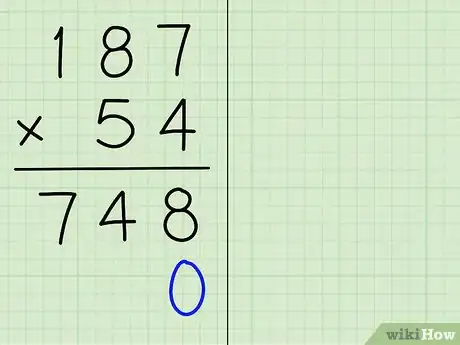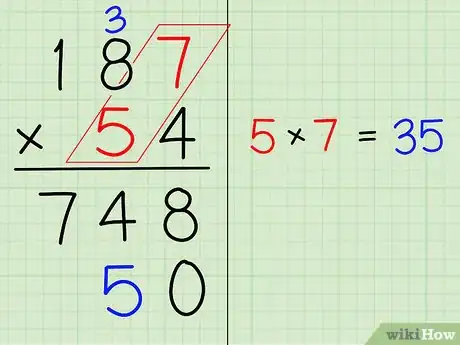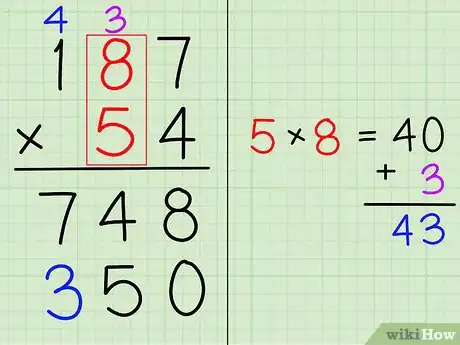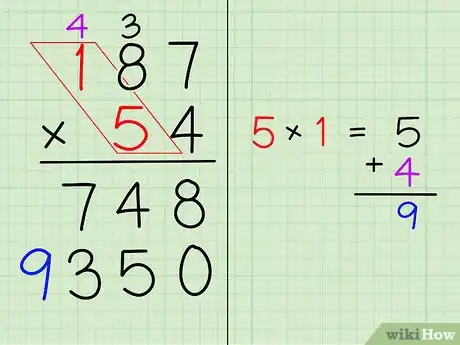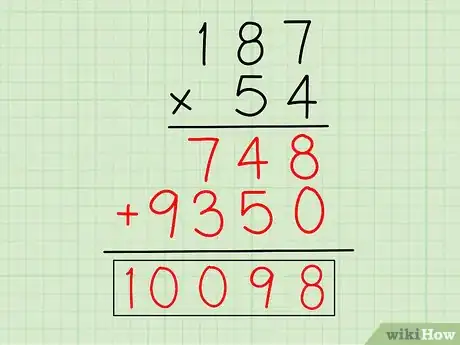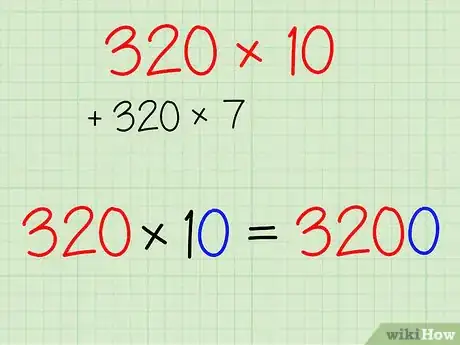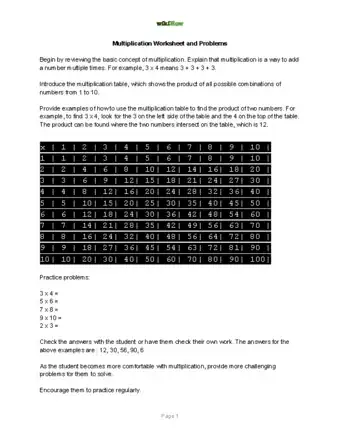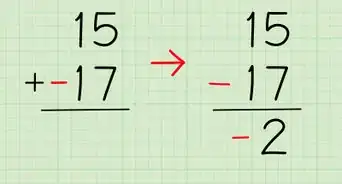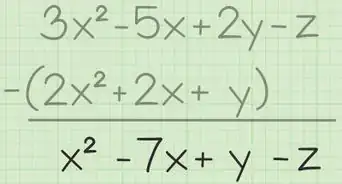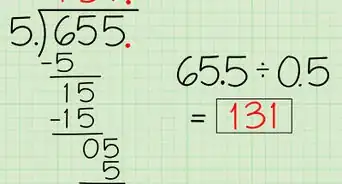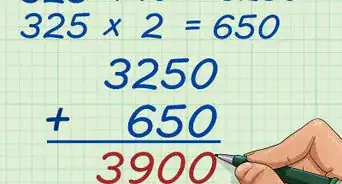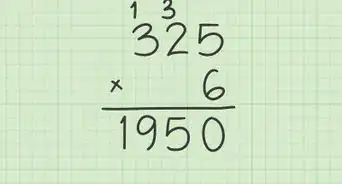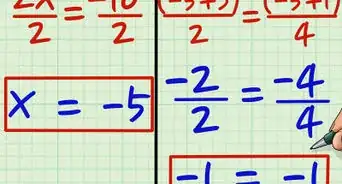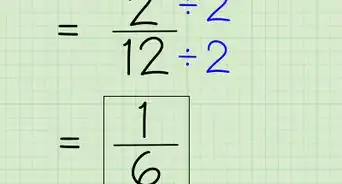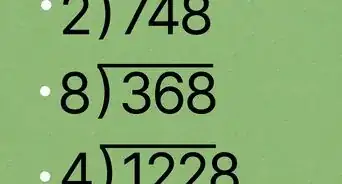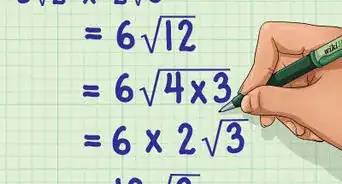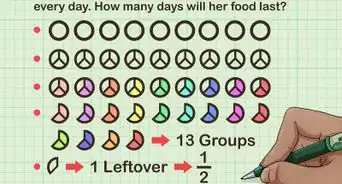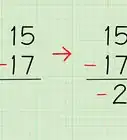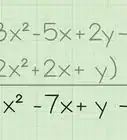This article was co-authored by wikiHow staff writer, Christopher M. Osborne, PhD. Christopher Osborne has been a wikiHow Content Creator since 2015. He is also a historian who holds a PhD from The University of Notre Dame and has taught at universities in and around Pittsburgh, PA. His scholarly publications and presentations focus on his research interests in early American history, but Chris also enjoys the challenges and rewards of writing wikiHow articles on a wide range of subjects.
There are 9 references cited in this article, which can be found at the bottom of the page.
wikiHow marks an article as reader-approved once it receives enough positive feedback. This article has 12 testimonials from our readers, earning it our reader-approved status.
This article has been viewed 728,121 times.
Learn more...
Multiplication is one of the four basic operations in arithmetic, along with addition, subtraction, and division. Multiplication can actually be considered repeated addition, and you can solve simple multiplication problems by adding repeatedly. For larger numbers, you'll want to do long multiplication, which breaks the process down into repeated simple multiplication and addition problems. You can also try a shortcut version of long multiplication by splitting the smaller number in the problem into tens and ones, but this works best when the smaller number is between 10 and 19.
Steps
Multiplying by Repeated Addition
-
1Restate the problem as an addition problem. For instance, say you are given the problem . This is really just another way to say “3 groups of 4,” or, for that matter, “4 groups of 3.”[1]
- So, since it's the same as “3 groups of 4,” you can view the problem as .
- Or, if you prefer, view it as
-
2Add the repeated number together to get your answer. In the case of a simple problem like , just add 4 together 3 times (or, alternatively, 3 together 4 times):[2]
- ; therefore,
- Alternatively, , so
Advertisement -
3Switch to long multiplication when multiplying 2-digit or larger numbers. Technically speaking, you can find the answer to or through repeated addition. But it will take you way too long![3]
- For an even quicker method for multiplying smaller numbers, practice your multiplication tables (or times tables).
Using Long Multiplication
-
1Line up the numbers you are multiplying, larger above smaller. Place the larger number on top of the smaller number and line up the units in the hundreds, tens, and ones places. Write the multiplication sign (x or ) to the left of the bottom number, and draw a line beneath the bottom number. You'll write your ongoing calculations below the line.[4]
- In the sample problem , 187 goes on the top line, with 54 below it. The 5 should be in line beneath the 8, and the 4 right beneath the 7.
-
2Multiply the top and bottom numbers in the ones place. In other words, multiply the bottom number's far right digit by the top number's far right digit. If your answer is two digits long (for instance, 28), carry the first digit of your answer (e.g., 2) above the digit in the tenths place of the top number. Then, place the second digit (e.g., 8) in alignment below the bottom number's far right digit.[5]
- In the sample problem , the digits in the ones place are 4 and 7, and . Write the number 8 from the number 28 directly below the 4 (with the line between them), and “carry” the 2 from the number 28 by writing a small 2 over top of the 8 in 187.
-
3Multiply the ones place on the bottom with the tens place on top. Repeat the process you did with the digits in the ones place (on the far right), but use the digit in the tens place (second from the right) for the top number. If you have a digit carried over from multiplying the ones place digits, add it to the result of multiplying the bottom ones place and top tens place digits.[6]
- In , 4 is in the ones place in the bottom number (54), and 8 is in the tens place in the top number (187). Compute , then remember to add 2 because of the number you “carried” from the previous computation—so,
- Place the 4 from the number 34 below the line under the 8, next to the number 8 that you wrote down in the previous step.
- Carry the 3 from the number 34 over the 1 in the number 187.
-
4Multiply the bottom ones place with the top hundreds place. Once again, you repeat the same process as before, but this time use the digit in the ones place (far right) of the bottom number, and the digit in the hundreds place (third from the right) on the top number. And remember to add any carried over digit![7]
- In , the ones place for the bottom number (54) is still 4, while the hundreds place for the top number (187) is 1. Calculate , then add the 3 you carried from the previous calculation to get
- Write the 7 just to the left of the 48 below the line. It should now read 748 below the line, because you have just calculated .
- Note that if the top number had 4 or more digits, you would just repeat the process until you multiplied the number in the ones place of the bottom number with all of the digits in the top number, continuing to move from right to left.
-
5Place a zero in the ones place below your calculation (the product). The results you got from multiplying by the bottom number's ones place (far right) digit are on the first row beneath the horizontal line. Now that you're ready to move on to multiplying by the digit in the tens place, create a second row below the line and place a zero in the far right position.[8]
- For , start a new line directly below the 748, and write directly below the 8 in 748. This zero is a placeholder that shows you are moving on to multiply the tens place value.
- If you're multiplying larger numbers, you keep adding another zero to the right every time you add another number row below the drawn line. So, the third number row would have to the far right, the fourth number row would have , and so on.
-
6Multiply the bottom tens place with the top ones place. Once again, you're repeating the same process. This time, start with the tens digit (second from the right) of the bottom number, and the ones digit (on the far right) of the top number.[9]
- In , the tens place in 54 is occupied by 5, and the ones place in 187 is occupied by 7. Therefore, calculate .
- Write down the 5 from 35 to the left of the zero (on the second row below the drawn line), and carry the 3 from the 35 above the 8 in the top number (187).
-
7Multiply the bottom tens place by the top tens place. In other words, multiply the second digit from the right in the bottom number by the second digit from the right in the top number.[10]
- In , multiply the 5 from 54 by the 8 from 187: . Then, remember to add the 3 you carried from the previous calculation to get
- Write down the 3 from 43 to the left of the 5 (giving you 350 on the bottom row), and carry the 4 from the 43 above the 1 in the top number.
-
8Multiply tens place on the bottom with the hundreds place on the top. That is to say, multiply the second digit from the right in the bottom number by the third digit from the right in the top number.
- For , multiply the 5 from 54 by the 1 from 187. Finish this easy equation (), then add the 4 that you carried from the previous computation (). Write 9 down next to the 3 to give you 9350 on the bottom row.
- You have done long multiplication to calculate .
-
9Add both products (number rows) below the drawn line. You just need to do some quick addition, and you'll be all done:[11]
- Add the digits in the far right columns, , draw another horizontal line below 9350, and write 8 to the far right just below the zero in 9350.
- Add the digits in the second column from the right, , and write 9 to the left of the 8 in the bottom row.
- Add the digits in the third column from the right, , write just to the left of 98, and carry the 1 to above the 9 in 9350.
- Add the 9 in the fourth column from the right with the 1 you carried to get . Write 10 to the left of 098 in the bottom row.
- Congratulations! is the answer to .
Splitting 2-Digit Numbers into Tens and Ones
-
1Break the smaller number in the problem into tens and ones. For instance, say you are given the problem . Since is the smaller number, break it into its tens and ones components.[12]
- This shortcut method works best when the smaller number is between 10 and 19. If the smaller number is between 20 and 99, you'll have to do some extra work to figure out the tens component. As a result, you'll probably find it easier to just do traditional long multiplication.
- You can also use this method with a 3-digit smaller number as well—in that case, you'll need to break it up into hundreds, tens, and ones. For example, 162 would become 100, 60, and 2. Once again, though, doing standard long multiplication will likely be easier.
-
2Create 2 separate multiplication problems. Now that you've split up the smaller number into tens and ones, use them to create 2 multiplication problems:[13]
-
3Solve the tens problem first by adding zero to the larger number. Multiplying by is always easy to do. Simply add a zero to the end of the other number. In this case, then, .[14]
- Likewise, when you multiply by , you add 2 zeros, you add 3 zeros when multiplying by , and so on.
-
4Solve the ones problem separately. In the current example, the ones problem is . Your best bet here is probably to do a fairly straightforward example of long multiplication:[15]
- Write down , then write just beneath it, aligned directly below the zero. Draw a 3-digit long line under the .
- Multiply and each digit of the larger number separately, working from right to left. Since , write a zero under the line, aligned below the .
- Since , write a just to the left of the zero under the line, and write a small just above the in . This is your reminder to add .
- Multiply , then add (as indicated by your reminder). Write just to the left of the and zero under the line.
- Your answer is under the line:
-
5Add together the tens and ones answers. Right now, you have and . To get the answer to the original equation, , simply add these 2 products together:[16]
- Write underneath , with the right-side zeros aligned. Draw a line underneath .
- Add each column separately, and write the sum below the line:
- The answer is .
Multiplication Worksheet and Problems
Community Q&A
-
QuestionHow would I multiply 0.2279 x 0.029 using method 2?
 DonaganTop AnswererFirst, temporarily remove the decimal points and multiply 2279 by 29. Then, note that there are a total of seven decimal places to the right of the decimal points in the two numbers. The decimal point in the final product is placed by counting seven spaces from the right, so that there are seven decimal places to the right of the final decimal point.
DonaganTop AnswererFirst, temporarily remove the decimal points and multiply 2279 by 29. Then, note that there are a total of seven decimal places to the right of the decimal points in the two numbers. The decimal point in the final product is placed by counting seven spaces from the right, so that there are seven decimal places to the right of the final decimal point. -
QuestionHow do I multiply a whole number with a decimal?
 Community AnswerYou do the same thing as method 2 and ignore the decimal until the end and count the numbers that are behind the decimal. In your answer count from right to left and place the decimal, for example: 0.3x0.4=.12 -- in the beginning 2 numbers all together were behind the decimal and in the end 2 numbers were behind the decimal.
Community AnswerYou do the same thing as method 2 and ignore the decimal until the end and count the numbers that are behind the decimal. In your answer count from right to left and place the decimal, for example: 0.3x0.4=.12 -- in the beginning 2 numbers all together were behind the decimal and in the end 2 numbers were behind the decimal. -
QuestionHow do I multiply if one digit is zero?
 Community AnswerIf one number is 0 then the product is 0. For example: 2 x 0 = 0 because two groups of zero means that 0+0=0.
Community AnswerIf one number is 0 then the product is 0. For example: 2 x 0 = 0 because two groups of zero means that 0+0=0.
References
- ↑ http://www.aaamath.com/pro39_x2.htm
- ↑ http://www.aaamath.com/pro39_x2.htm
- ↑ https://www.mathsisfun.com/numbers/multiplication-long.html
- ↑ https://www.mathsisfun.com/numbers/multiplication-long.html
- ↑ https://www.calculatorsoup.com/calculators/math/longmultiplication.php
- ↑ http://mathworld.wolfram.com/LongMultiplication.html
- ↑ https://www.calculatorsoup.com/calculators/math/longmultiplication.php
- ↑ https://www.ducksters.com/kidsmath/long_multiplication.php
- ↑ https://www.calculatorsoup.com/calculators/math/longmultiplication.php
- ↑ https://www.ducksters.com/kidsmath/long_multiplication.php
- ↑ https://www.khanacademy.org/math/arithmetic/arith-review-multiply-divide/arith-review-multi-digit-mult/v/multiplication-6-multiple-digit-numbers
- ↑ https://www.cut-the-knot.org/Curriculum/Arithmetic/LongMultiplication.shtml
- ↑ https://www.cuemath.com/numbers/long-multiplication/
- ↑ https://www.cut-the-knot.org/Curriculum/Arithmetic/LongMultiplication.shtml
- ↑ https://www.cuemath.com/numbers/long-multiplication/
- ↑ https://www.cut-the-knot.org/Curriculum/Arithmetic/LongMultiplication.shtml
- ↑ https://www.mathsisfun.com/numbers/multiply-by-zero.html
About This Article
If you want to learn to multiply, first keep in mind that multiplication is an advanced form of addition. For example, for 5 × 3, add 5 three times: 5 + 5 + 5 =15. To multiply bigger numbers, place the larger number on top of the smaller number. Then, multiply the last digit in the bottom number by each individual digit in the top number. If your answer is a two digit number, use the digit in the one's place as your answer, and carry the digit in the 10's place to the next digit in the top number. Write each answer below the line under the problem, and if you carried a number over, add it to the corresponding answer. Then, if there's another digit in the bottom number, add a zero under your answer from the first digit and repeat the process with the next digit over. With each new digit in the bottom number, add an extra zero under the answer. Keep doing this until you've multiplied all of the bottom digits by all of the top digits. Then, add all of your answers below the line together to find your final answer. If you want to learn how to do simple multiplication equations with addition, keep reading the article!
